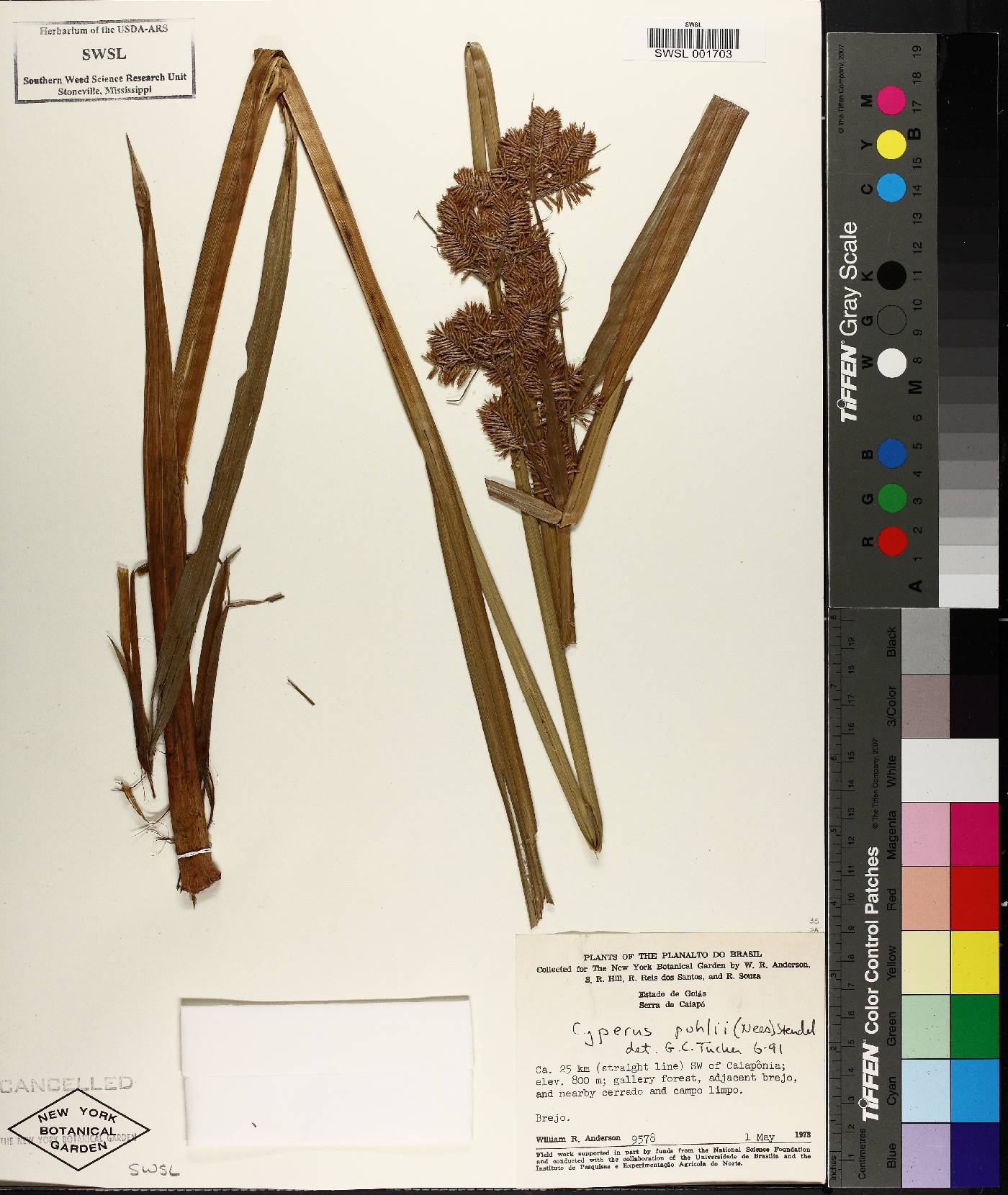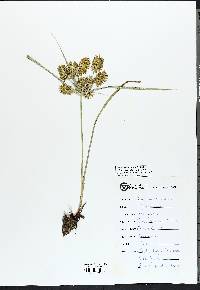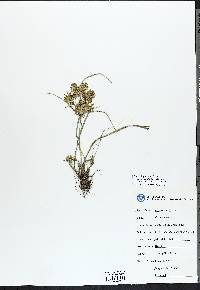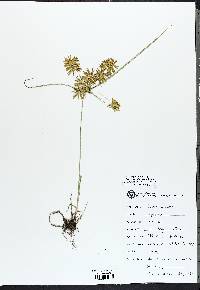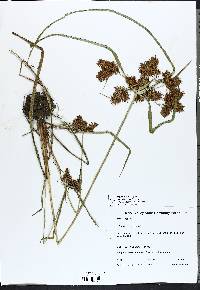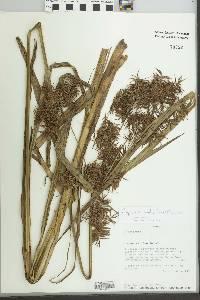
|
|
|
|
Family: Cyperaceae
|
FNA 2002 Common Name: strawcolored flatsedge Duration: Perennial Nativity: Native Lifeform: Graminoid General: Rhizomatous perennial with basally swollen stems, nearly cormlike, three sided stems 20-40 cm tall, 1-6 mm in diameter, glabrous or with few prickles subapically. Vegetative: Leaves flat, 20-40 cm long, 1-4 mm wide, margins and midribs glabrous or minutely roughened. Inflorescence: Loosely ovoid to oblong-cylindric spikes, 1-4, these 10-28 mm long by 10-40 mm wide, rays usually 3-6, 0.5-7 cm,inflorescence a congested head, subtending bracts 5-7, ascending; spikelets 12-50, linear-lanceoloid, compressed, 5-30 mm by 0.5-1 mm wide, 3-11 deciduous floral scales, appressed, green in the middle, straw brown to pale brown on edges, oblong-obovate, 3-4.5 mm by by 1-2 mm wide, acute apex; achene purplish brown, three sided, more or less stipitate and narrowly oblong and flattened, 1.5-2.5 mm long by 0.5 mm wide, acute with minutely punctate surfaces. Ecology: Found in damp to moist soils along ponds, lakes, streams, seeps, and springs as well as in disturbed soils from 2,000-5,000 ft (610-1524 m); flowers August-October. Notes: Fairly common species throughout its range, but can be confused with C. odoratus and C. esculentus. Distinguished by the flattened spikelets from C. odoratus, and by the deciduous floral scales and cormlike stem base from C. esculentus. Recent taxonomy names this species, Mariscus pohlii. Ethnobotany: Unknown Etymology: Cyperus is from the Greek word meaning sedge, while strigosus means covered in straight, flat laying hairs. Synonyms: Cyperus hansenii, Cyperus stenolepis, Cyperus strigosus var. capitatus, Cyperus strigosus var. multiflorus, Cyperus strigosus var. robustior, Cyperus strigosus var. stenolepis, Cyperus strigosus Editor: SBuckley, 2010 |
This project was made possible in part by the Institute of Museum and Library Services [MG-70-19-0057-19].
Powered by Symbiota

